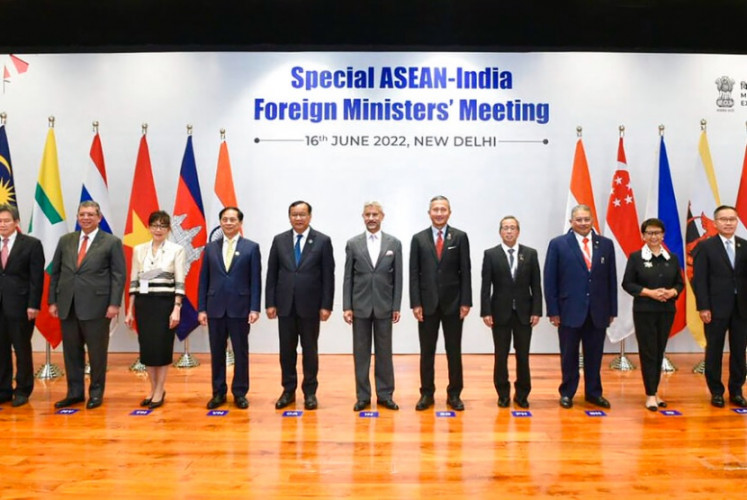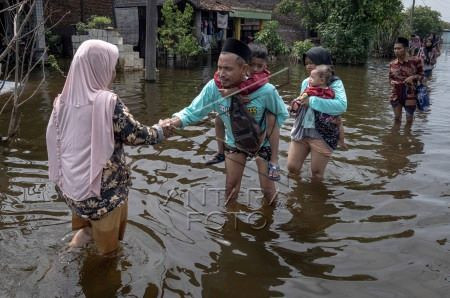Development aid: A utopia that doesn't last
The development aid has undoubtedly become an industry yet a disputable issue across the world.
Change Size
 Tuberculosis killed at least 1.7 million people in 2017, according to the WHO, making the airborne infection the world's deadliest infectious disease. (AFP/Anne-Christine Poujoulat)
Tuberculosis killed at least 1.7 million people in 2017, according to the WHO, making the airborne infection the world's deadliest infectious disease. (AFP/Anne-Christine Poujoulat)
T
he development aid has undoubtedly become an industry yet a disputable issue across the world. History records that billions of dollars have been disbursed up to now since the first time in 1986 food aid were distributed.
For the health sector alone, between 1990 and 2015 an amount of US$502.7 billion Development Assistance for Health (DAH) had been disbursed to various health sectors. However, within the health sector itself, HIV accounts for 23 percent of all health aid, while tuberculosis (TB) accounts for only around 3 percent of the total aid.
The head of states gathered at annual United Nations General Assembly (UNGA) this year which one of the sessions highlights one important topic, to end TB global epidemic. One of the most important declarations from the head of states is more resources need to be allocated for TB, which in other words mean, developed countries channel fund to this cause even more, and developing countries prioritize and reallocate resources to this problem. While this kind of pledge of rich countries to contribute at least their 0.7 proportion of their GDP on Official Development Assistance (ODA) has been echoed for the past decades, not all countries, however, have followed the target.
In the case of Indonesia, international aid has been accounted as complementary to the national budget to expand the reach of government projects. In 2014, the World Bank recorded that Indonesia received 0.01 ODA (% per GNI). Moreover, more than $6 billion of ODA have been granted to health sector in Indonesia since 1990. For the past years, the Indonesian) has been trying to limit the foreign aid to be no more than 5 percent of the national annual budget to ensure that Indonesia’s development does not depend on it.
It is a good sign when in 2018 Indonesia’s health budget has increased to 5 percent of the total national budget, though almost half of it is to fund our National Health Insurance. However, in the case of three infectious diseases: HIV, TB, and Malaria, there is only about 55 percent of the funding in Indonesia provided by the national and local governments, and private contributions, while the rest is still provided by foreign donors.
As one of the biggest donors for Indonesia’s health sector, Global Fund, records the grant allocation for 2014-2017 totaling $302 million ($113 million for HIV, $104 million for TB, $75 million for malaria and $10 million for Health Systems Strengthening). Another question arises, what will happen when Global Fund stop their grants for Indonesia? As Indonesia is becoming one of the largest economies in the world, they may consider to stop the fund very soon.
Further looking at Indonesia’s attainment on health development, the report of the achievement of Indonesia MDGs 2014 shows that those health-related goal 4,5, and 6 had not been successfully achieved, as by 2018 Indonesia still has high burden on HIV, TB and Malaria. Though we are progressing, the money and the efforts that come along do not seem work in harmony. Financial resources are undeniably one of the most important elements, particularly to maintain and sustain an effort would need adequate funds, however, an effective use of it, is also an imperative element and remains an issue itself. Our dependency on health aid is one thing, and how we utilize the aid is another thing. Country Coordinating Mechanism (CCM) in Indonesia recorded the Global Fund budget on TB was only 70 percent absorbed in 2017. That said, there are two big questions that all stakeholders should ask how they do things, do we always need aid on and on? or we can actually try harder to pool more domestic resources, reallocate and utilize them better than we used to do?
Towards the achievement of global goals, Indonesia will indeed need enormous financial resources. The government of Indonesia still has homework to ensure the efforts and results are improved and sustained. Besides mobilizing resources from potential domestic sources like private sectors, one of the things might be done by the government is shifting and improving domestic resources through reallocating and utilizing them in a more efficient and effective way.
‘Efficient’ and ‘effective’ are also a vague term, hence, there should be more mechanisms and right indicators in our public system in general where we can measure whether the output equals to the budget they spent and where people are held accountable for money they spent and the results they achieved. Asking for more money is much easier than spending it correctly. Further, as declared at Paris Declaration on aid effectiveness (2005), donors and recipients have to put ownership, alignment, harmonization, results-based, and mutual accountability on the top of efforts. That way, it may lead to, ultimately, better results of health development.
***
The writer is a health development worker, currently working with Center for Indonesia’s Strategic Development Initiatives and Stop TB Partnership Indonesia.








